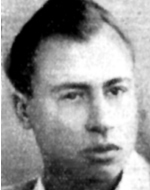Born in 1920 in Greece, in the port city of Thessaloniki, Avraham was a member of Zionist organizations and from a young age he saw the Land of Israel as his true homeland in Salonika. A large Jewish cultural center and its Jewish residents played a central role in its economic development, and in the 1930s, fascist and anti-Jewish tendencies increased in Greece, and a large emigration movement began, and 10,000 Jews emigrated from Salonika to Eretz Israel, leaving another 50,000 Jews. By the Germans in April 1941, and immediately began the confiscation of Jewish property and the destruction of literary and cultural treasures. In 1942 the Jews of Salonika were incarcerated in the ghetto and in July 1942 all the Jewish men were rounded up and sent to forced labor camps, and few succeeded in escaping to the area of the occupation. In the winter of 1943, Salonika began the “Final Solution.” Approximately 44,000 Jews were deported to Auschwitz, and a selection was carried out, after which many were sent to the gas chambers. When World War II broke out in September 1939, Avraham enlisted in the army. He fought fiercely against the Italians in the framework of the Greek army, but with the surrender of the army and the German takeover of the country his fate was the fate of all the Jews of Salonika. He was deported with his family to Auschwitz, from where they were transferred to Birkenau and then to Warsaw. When the Red Army approached the Polish capital, they were sent to the Dachau concentration camp. Dachau, near Munich in Germany, was one of the first concentration camps established by the Nazis and included more than 30 subcamps. Tens of thousands of prisoners were forced to work hard and suffered from hunger, exhaustion, and severe persecution by the SS. Who practiced at the site. More than 200,000 people have crossed the camp during its years of existence. Some 31,000 of them perished, including Avraham’s entire family. Avraham spent a year in Dachau and was liberated upon the arrival of American forces in April 1945. From the day of his release, he sought to immigrate to Palestine. In Landsberg, his temporary residence, he joined the Betar movement, and during his time there he studied the profession of voting and spent his free time learning Hebrew, reading and listening to music. He represented his company at the first convention of the Revisionist Zionists Party that took place in Frenwald. Avraham went with his company to France, and on March 1, 1947 he and his friends boarded the illegal immigrant ship son of Hecht on his way to Israel. The ship, which was purchased by the Irgun with the donations of American Jews, sailed from the port of Port de Bouc, carrying about 600 immigrants, most of them Betar members. Upon arrival at the sea, she was spotted by British reconnaissance planes, who were shot at by two destroyers. The sailors stormed the ship and forced it to reach the port of Haifa. Where the immigrants were placed on deportation ships and taken to the detention camps on Cyprus. Abraham spent a year and a month in Cyprus, continued his studies in Hebrew and participated in the seminar. When he reached the permit to immigrate to Israel, he arrived in Haifa on the André ship on April 20, 1948, at the height of the War of Independence. He moved to Tel Aviv, where he rented a small room, and immediately joined the Irgun fighters.In the early days of the War of Independence, the Etzel forces conducted a number of large-scale operations, mainly in Jaffa, and fought in the battles of the Old City of Jerusalem. In May 1948 the High Command of the Haganah requested the Irgun’s assistance in attacking Ramle, whose inhabitants were hostile to the Jewish settlement and harassed Jewish transport to JerusalemShe passed by. Ramla was perceived as a threat to the nearby settlements of the Dan region, and because of the large number of Arab fighters who were concentrated there, the city also endangered the Jewish settlements in the south that were preparing for the Egyptian invasion. The IZL immediately responded to the request of the Haganah and recruited hundreds of its fighters from all over the country (except for besieged Jerusalem), and the fighters were concentrated in the nearby settlement of Beer Ya’akov. , Fought the Jordanian army force attacking their base at the Sarafand Officers’ School (Sarfand) in these attacks on Ramle, and in blocking a Jordanian armored force that attacked an Irgun position in June 1948, more than 50 fighters of the Irgun Zvai Leumi fell. Among those killed was Abraham, who fell on the 24th of Iyar 5708 (June 2, 1948). He had lost his soul in the arms of his closest friend, with whom he had been saved from the ravages of annihilation. Twenty-eight years old. Abraham was laid to rest in the military cemetery in Nahalat Yitzhak. This hero is a “last scion”. The survivors of the Holocaust are survivors of the Holocaust who survived the last remnant of their nuclear family (parents, brothers, sisters, sons and daughters) who experienced the Holocaust in the ghettos and / or concentration camps and / or in hiding and hiding in territories occupied by the Nazis and / Or in combat alongside members of the underground movements or partisans in the Nazi-occupied territories who immigrated to Israel during or after World War II, wore uniforms and fell in the Israeli army.
